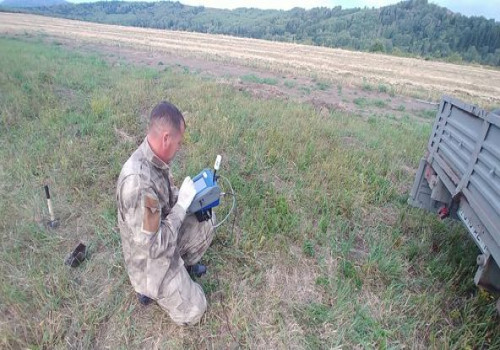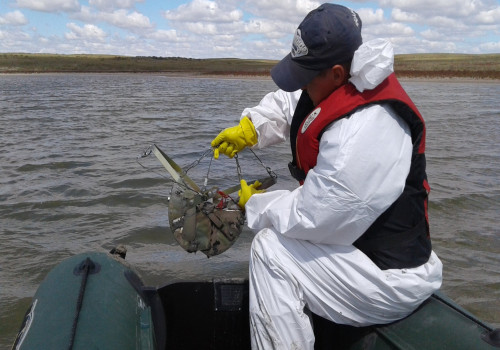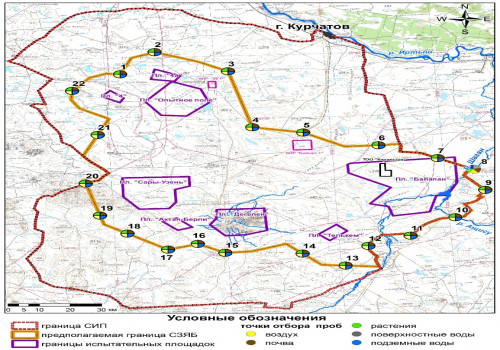Establishment of Environmental Monitoring System at Radiation-Hazardous Areas of the Former Semipalatinsk Test Site
16 May 2022



30 Projects to the 30th Anniversary of NNC RK!
Project No.13. The Period of 2007–2022. Establishment of Environmental Monitoring System at Radiation-Hazardous Areas of the Former Semipalatinsk Test Site
As the result of integrated environmental study of Semipalatinsk Test Site (STS) territory during the period from 2008 to 2021, a large amount of information on the radiation situation was obtained. It was determined that main mechanisms of radionuclides migration from nuclear test sites to the territories adjacent to STS territory is the transfer of radionuclides by means of air and water environments and additional – migration of radionuclides in soil and plant cover. Soil and plant can act as integral indicators of radioactive contamination of the territory that are sources of secondary redistribution of radioactive contamination of the natural environment.
Radioactive contamination of radiation-hazardous areas are mainly characterized by the presence of 137Cs, 90Sr, 239+240Pu, 241Am and 3H technogenic radionuclides most of which have long half-life period but radionuclides 3Н and 90Sr have migration properties that allow them to migrate for long distances from their occurrence places.
After completion of integrated survey, radiation-hazardous territories that include testing STS areas and radioactive fallouts plume were detected.
Currently, one of the main missions of the National Nuclear Center of RK was the conduction of environmental status monitoring that allows to detect timely the negative changes of radiation situation influencing the safety of environment and population.
Monitoring includes the assessment of radiation situation at the points located along the perimeter of borders of radiation-hazardous territories of the test site as well as the control of equivalent gamma dose rate, monitoring of technogenic radionuclides concentration in a surface and underground waters, air, soil and vegetation.
The purpose of monitoring is obtaining of qualitative and quantitative data characterizing radiation situation at the border of radiation-hazardous territories.
Monitoring tasks include the following:
–– regular observation for radiation status of the environment near location of monitoring points;
–– prompt detection of possible unfavorable trends in propagation of radiation situation;
–– analysis, assessment of degree and character of change of radiation situation;
–– conduction of additional studies with the aim of clarification of the arising issues concerning radiation safety;
–– the prediction of radiation situation effect in short-term and long-term prospects;
–– preservation and accumulation of information on radiation situation of the environment;
–– elaboration of recommendations and proposals for making administrative decisions by authorized state bodies, management of enterprises and organizations engaged in economic and other activities at the territory of the former STS.
Siting of monitoring points is made on the basis of:
а) availability of radioactive contaminated territory near observation place (testing sites of STS, radioactive fallouts plume);
б) availability in the immediate vicinity of regional or large additional geological faults;
в) availability in the immediate vicinity of borders of large water reservoir basins.
Air monitoring is taking by air sampling using aeration devices. Air sampling is taking 3 times per year (spring, summer and fall).
Monitoring of underground waters is conducted by water sampling from observation boreholes. Taking of underground waters is made 3 times per year (spring, summer and fall).
Monitoring of surface waters is conducted by water sampling from surface water object (Shagan river). Surface waters sampling is made 3 times per year (spring, summer and fall).
Monitoring of soil and plant cover is conducted by conjugate sampling of air and underground waters. Soil and plant sampling is made 2 times per year (summer and fall).
According to radiation monitoring, the integrated assessment of technogenic radionuclides concentrations changes is conducted, the comparative analysis of technogenic radionuclides concentrations with reference levels and other standards (intervention level, minimal-significant specific and allowable volume activities of technogenic radionuclides) is made.
Latest news by category:
-
Participation in IAEA International Fusion Research Council Meeting on Controlled Thermonuclear Fusion
25 December 2025
-
NNC RK Participated in CIS Commission Meeting on Peaceful Use of Atomic Energy
17 December 2025
-
Pivotal Role of Kazakhstan in Global Thermonuclear Fusion Research
17 December 2025
-
Enhancing Human Resources Development with Support of JAEA
09 December 2025